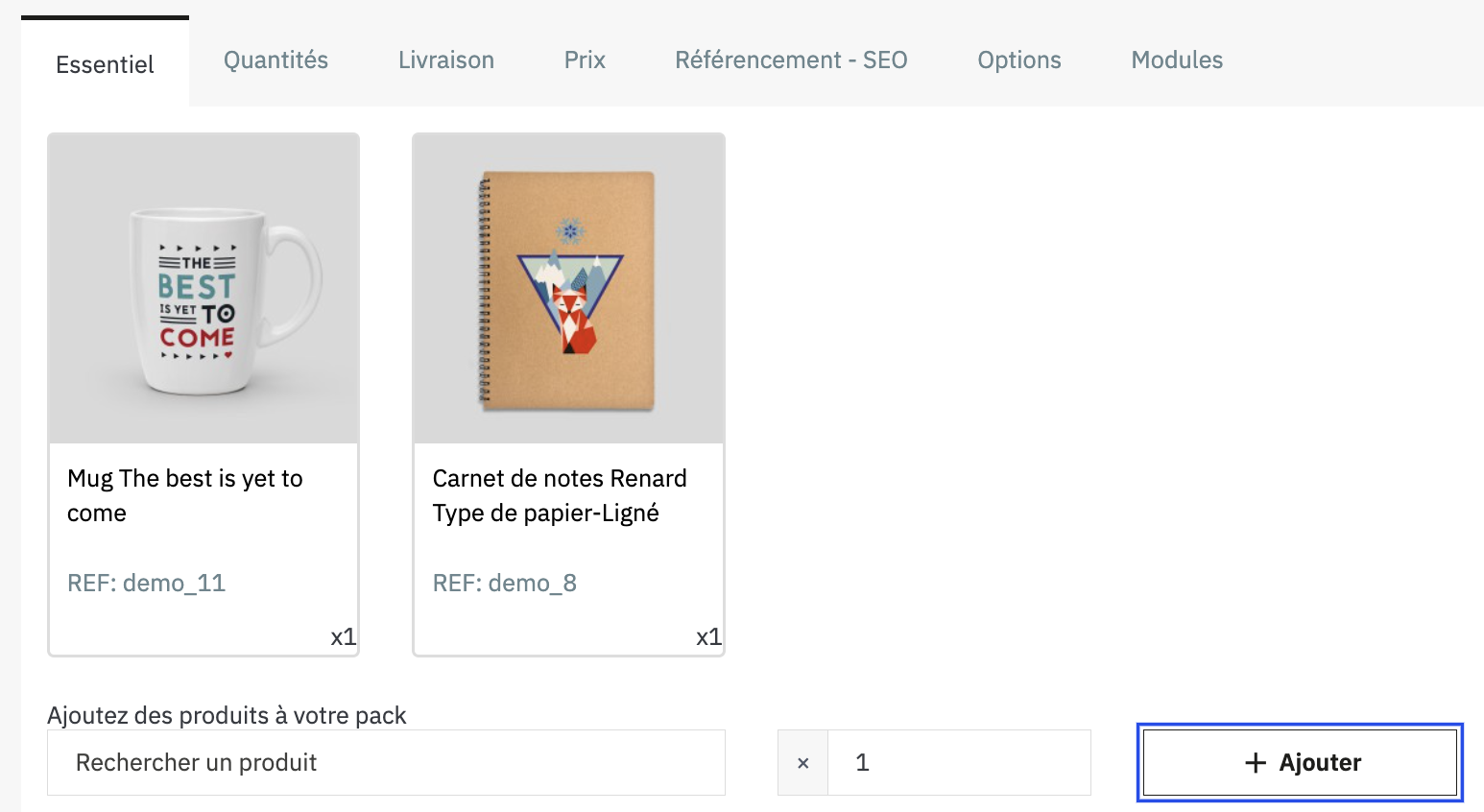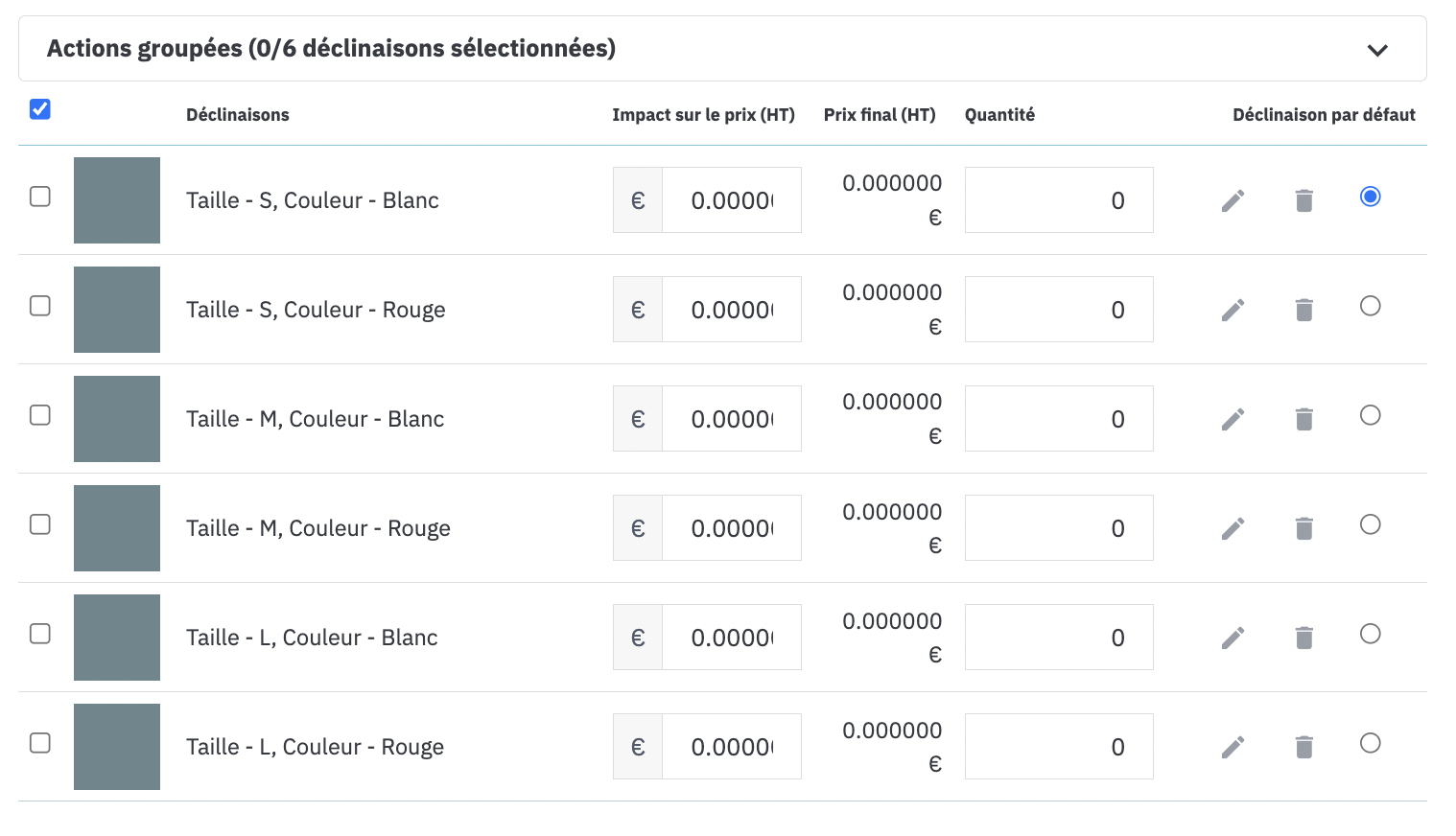To add a new product, go to the Catalogue > Products page and then click on the New product button.

Select the product type
Before completing the product page, you must first select the type of product you want to create.
There are 4 types of products:
-
Standard product: a physical product that must be shipped. This is a simple product, which does not come in several options for your customer. For example, a notebook.
-
Dematerialized product: a dematerialized product does not require delivery. This is the case for services, for example. It is also possible to add one or more downloadable files that your customer can retrieve after payment. For example: a show ticket or a photo.
-
Product pack: a bundle of several products from your catalog sold together. For example, a special Valentine's Day pack including a bracelet and a ring.
-
Product with variations: a product that comes in several options (size, color, etc.) from which your customer can choose. For example, a t-shirt.
You can select the type of product from the drop-down list at the top of the page, to the right of the name of your product.

If it is a product with variations, first select "Standard product" and then "Product with variations" in the Essential tab.

Complete the page with the product information
The Product page is divided into several tabs. Depending on the type of product, certain fields will be added or hidden on the page.
Standard product
- The Essential tab allows you to add all the basic content such as images and the description of your product.
- The Quantities tab allows you to indicate the available stock or manage preferences in the event of stock shortages.
- The Delivery tab allows you to manage delivery times and costs.
- The Price tab allows you to determine the selling price of your product. If you wish, you can also set specific prices that will apply if your customers meet certain criteria.
- The Referencing/SEO tab allows you to customize the display of your product in search engines (meta title tags, meta description, etc.).
- The Options tab brings together several varied functionalities. For example, you can activate the functionality that will allow your customers to personalize their product with text or an image.
- The Modules tab groups together the modules associated with your Product fiche. For example, if you offer delivery with Colissimo, you will be able to access and configure the Colissimo module directly from this tab.
| 💡 Take care with your description to improve your referencing. For the description, reuse the same keywords as in the name. Also highlight your value proposition and describe your product perfectly. Please note that you should not copy/paste the same description for several products. Duplicate content is the enemy of SEO! |
Product pack
From the Essential tab, you can select the products you wish to add to the pack and the quantity in which you wish to add them from your catalogue.
Therefore, you must first add the products individually to your catalogue before creating the pack.

Digital product
In the case of a digital product, the same tabs are found as for a standard product, except for the Delivery tab. Indeed, a digital product does not need to be shipped.
The Quantities tab is also replaced by a Digital Product tab in which you can both manage the product's inventory and add one or more downloadable files that your customers will be able to retrieve after payment.

Product with variations
In the case of a product with variations, you will find the same tabs as for a standard product, but the Quantities tab is replaced by a Variations tab. In this tab, you can generate variations, then manage the quantities and the price of each variation of your product.
For example:
You sell a t-shirt that comes in two colours (red and white) and in 3 sizes (S, M and L).
In this case, you have 2 attributes (colour and size) and 5 corresponding values (red, white, S, M and L).
From these attributes and values, you must generate all the variations of your product:
Click on “Generate”. The 6 variations of your product will then be displayed automatically in the form of a table.
Enter each attribute associated with its value, here: “Color: White”, “Color: Red”, “Size: S”, “Size: M” and “Size: L”.
You can then indicate the available quantity and the price of each variation.

| 💡 Save time by creating your attributes in advance. Some basic attributes such as sizes and colors are already present by default in your back-office. But if the attribute you want to add does not yet exist, you will first have to create it in Catalogue > Attributes & Characteristics. |
Comments
0 comments
Please sign in to leave a comment.